Mesmerizing Underwater Photos of WWII Shipwrecks That Sank in Canada
In the summer months, a parade of icebergs break away from the Arctic and make their way south drifting through the region called Iceberg Alley. Divers visiting the Bell Island shipwrecks often divert to make a dive on these floating giants. (All photos: Jill Heinerth)
Few people know that Bell Island, in Newfoundland, Canada, was directly attacked during World War II. In 1942, German U-boats twice raided the island in an attempt to disrupt the flow of iron ore being transported from mines on the island. This high-grade ore was used to supply steel critical to the war effort.
Germans knew that if they could impede the movement of ship-building materials, even temporarily, then the Allied efforts would be seriously hindered. In two separate attacks, U-boats sank the SS Saganaga and SS Lord Strathcona followed by the SS Rose Castle, the Free French vessel PLM 27 and the loading wharf on Bell Island. In all, 69 men were killed. The sheer temerity of the attack signaled to North Americans that they were now on the front line of the Battle of the Atlantic.
Today, divers can visit these remarkable war graves. A short distance from shore, experienced divers can plunge into the cold water and explore shipwrecks resplendent with colorful marine growth. Submerged wrecks become artificial reefs and when they are situated in rich waters like Conception Bay, Newfoundland, they become magnets for biodiversity.
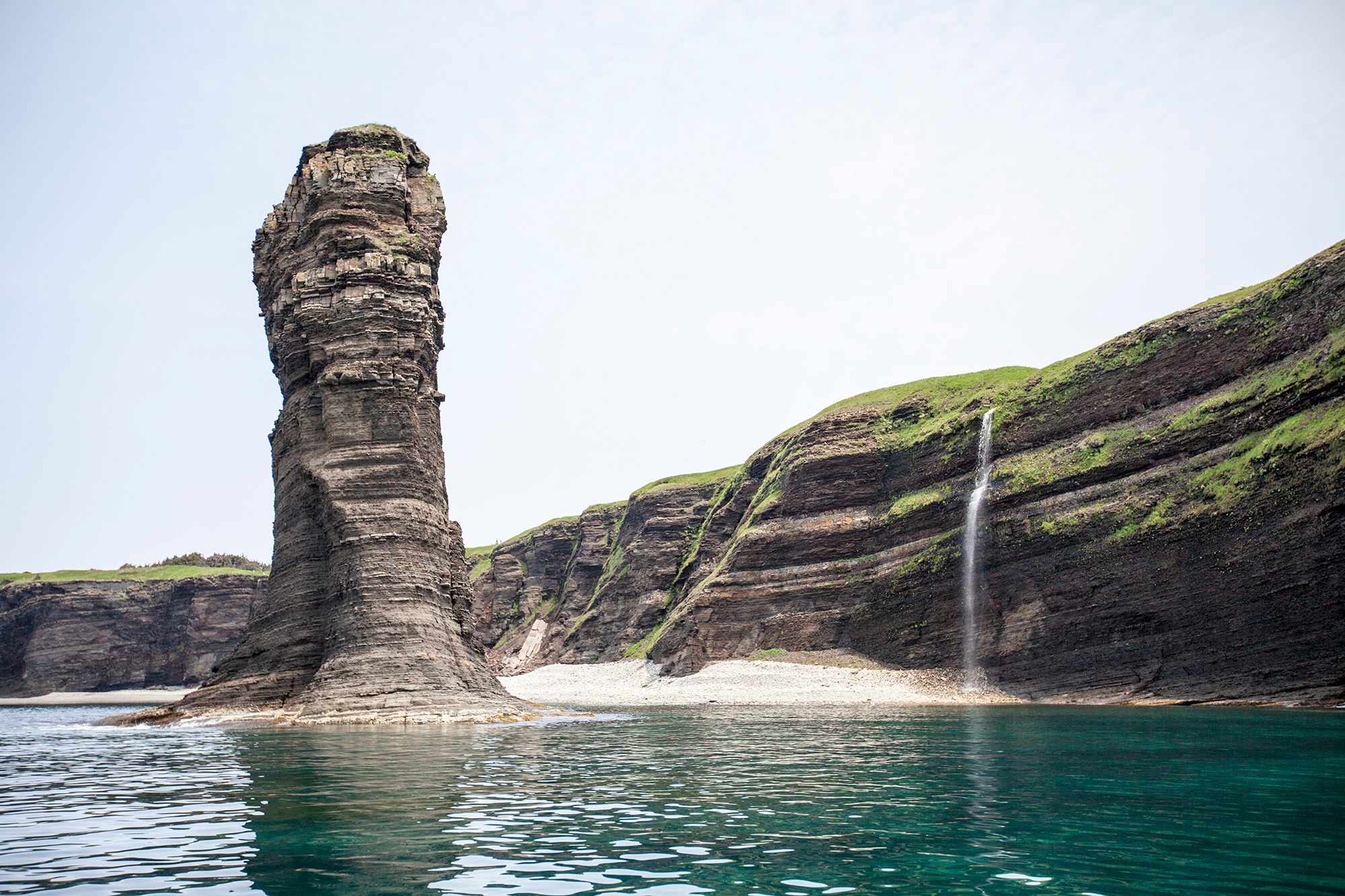
Under cover of darkness, on September 4, 1942, U-513, a German U-boat captained by Rolf Ruggeberg followed a small steamer into the harbor in Conception Bay. He quietly stayed near the anchorage in roughly 100 feet of water until the following morning when he ascended to periscope depth and fired on the SS Lord Strathcona and SS Saganaga. 29 men died while the citizens of Wabana Bay struggled to assist shocked survivors to safety on shore. Meanwhile the U-513 escaped.
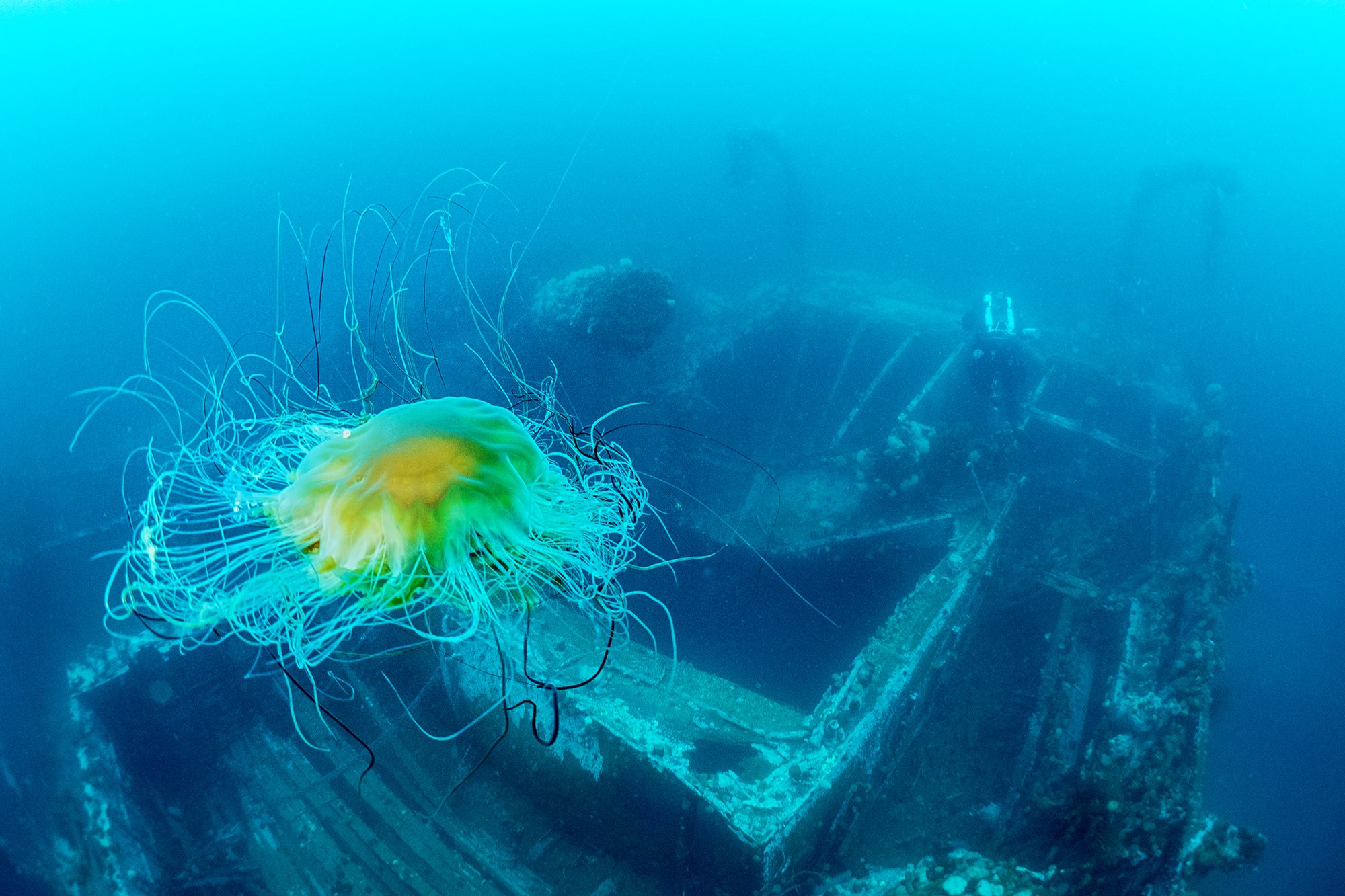
Less than two months later, on the night of November 2, 1942, Lieutenant Friedrich Wissman slipped into Conception Bay piloting a U-518. He stayed very close to the steep cliffs of Bell Island to avoid being spotted. His first torpedo missed its mark, passed under another ship, and struck the loading pier in Wabana Bay. Everyone on the island was awakened by the blast and hurried to the port to assist with casualties. Quickly, Wissman fired another torpedo and sank the Rose Castle, killing 28 men.
Above, the lifeboat davits of the vessel hang empty as diver Sabine Kerkau swims in the murky distance beyond a giant Lion’s Mane Jellyfish.
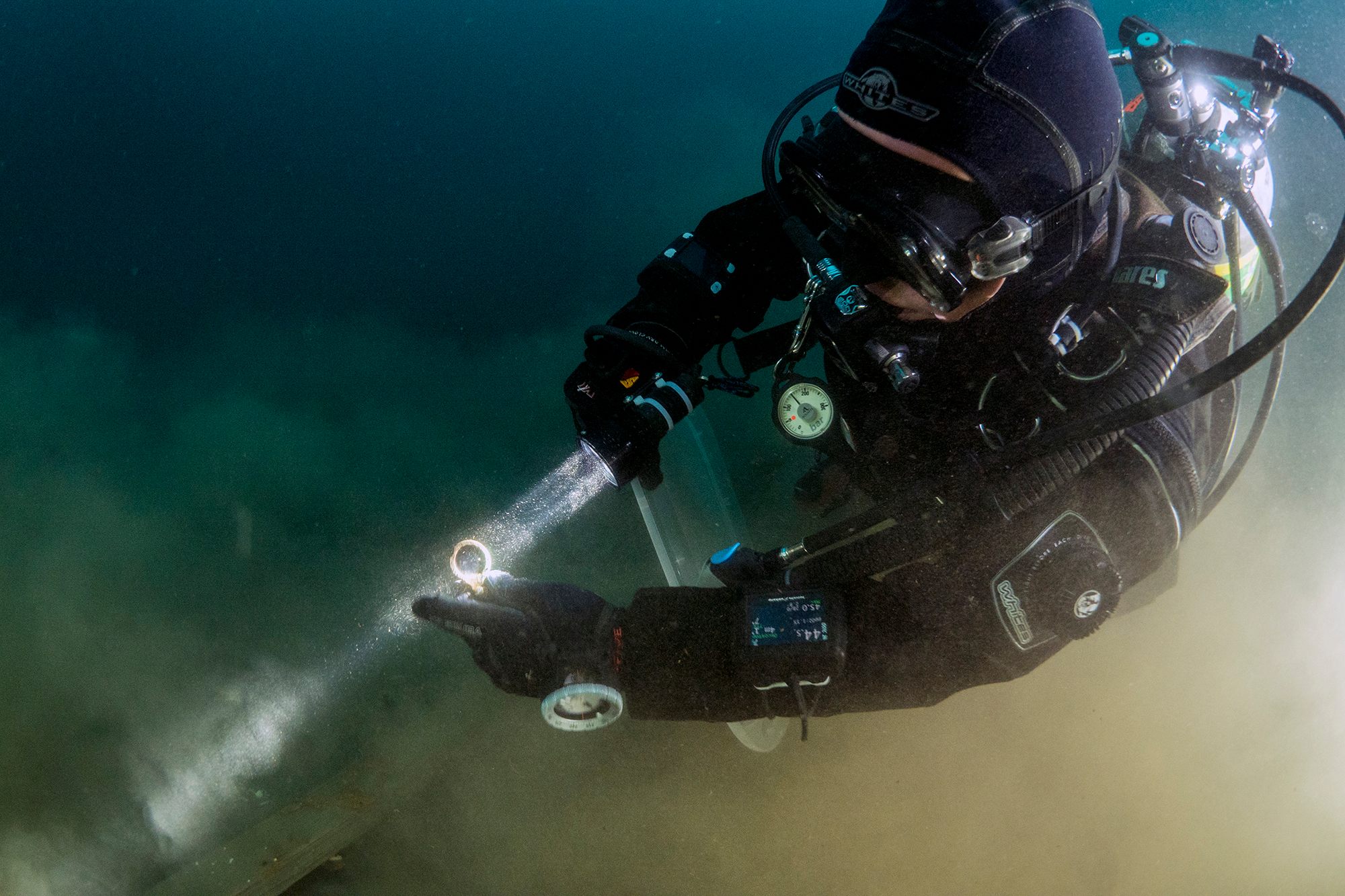
The SS Rose Castle was no stranger to attack. The vessel was anchored in Wabana Bay when the Saganaga and Lord Strathcona were sunk. It had been previously attacked by a U-69 that was responsible for sinking a passenger ferry, the SS Caribou. During that fight, the Rose Castle had been struck, but the torpedo failed to explode and simply bounced off the hull. But her luck ran out when she was sunk by the U-518.
In July 2000, divers discovered portions of the torpedo and mounting ring that was fired on the Rose Castle. This artifact now resides in the provincial museum, The Rooms. Recently diver Luc Michel recovered the captain’s sextant, which is being restored by conservators with a plan to place it at the Bell Island Museum.

After sinking the Rose Castle, Lieutenant Wissman trained his sights on the Free French vessel PLM27. The ship was quickly downed, drowning 12 men, while the U-boat slipped away beneath the surface. The captain of the PLM27 was spared in the sinking because he was onshore at the time.
The captain was French, and given that his country was under Nazi occupation, some wondered whether he had been the victim of coercion. He had also sold his piano a few days before the attack on his vessel. After a lengthy investigation, the captain was cleared of being a spy, and it was discovered that another spy had been at anchorage in Bell Island that night. Werner von Janowski, an agent of Germany’s Abwehr intelligence corps, was aboard the U-518. He was put ashore in the Gaspé Peninsula and was soon arrested by the Royal Canadian Mounted Police.

The anchor of the Saganaga lies on her deck. Underwater photographer Cas Dobbin shoots owner of Ocean Quest Adventure Resort, Rick Stanley. The two divers are using devices called rebreathers that recycle exhaled gases to provide underwater explorers with increased time beneath the surface.
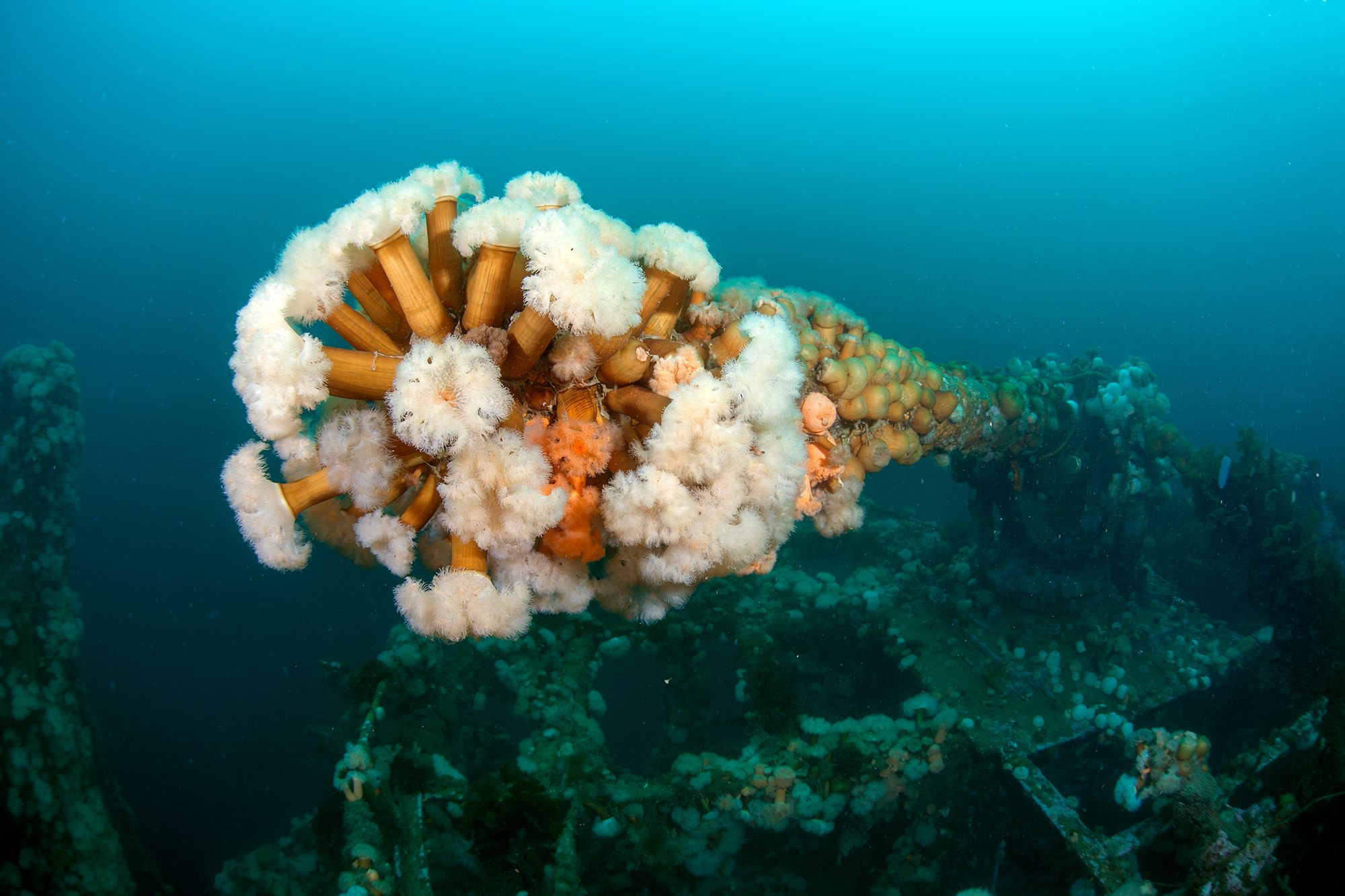
The gun barrel of the SS Lord Strathcona sprouts a bouquet of anemones. These filter-feeding animals cling to the metal substrate and filter plankton into their mouths to feed. When disturbed or when not feeding, the fluffy tentacles retract inside the body of the creature.

The anchor of the Saganaga dwarfs diver Cas Dobbin.
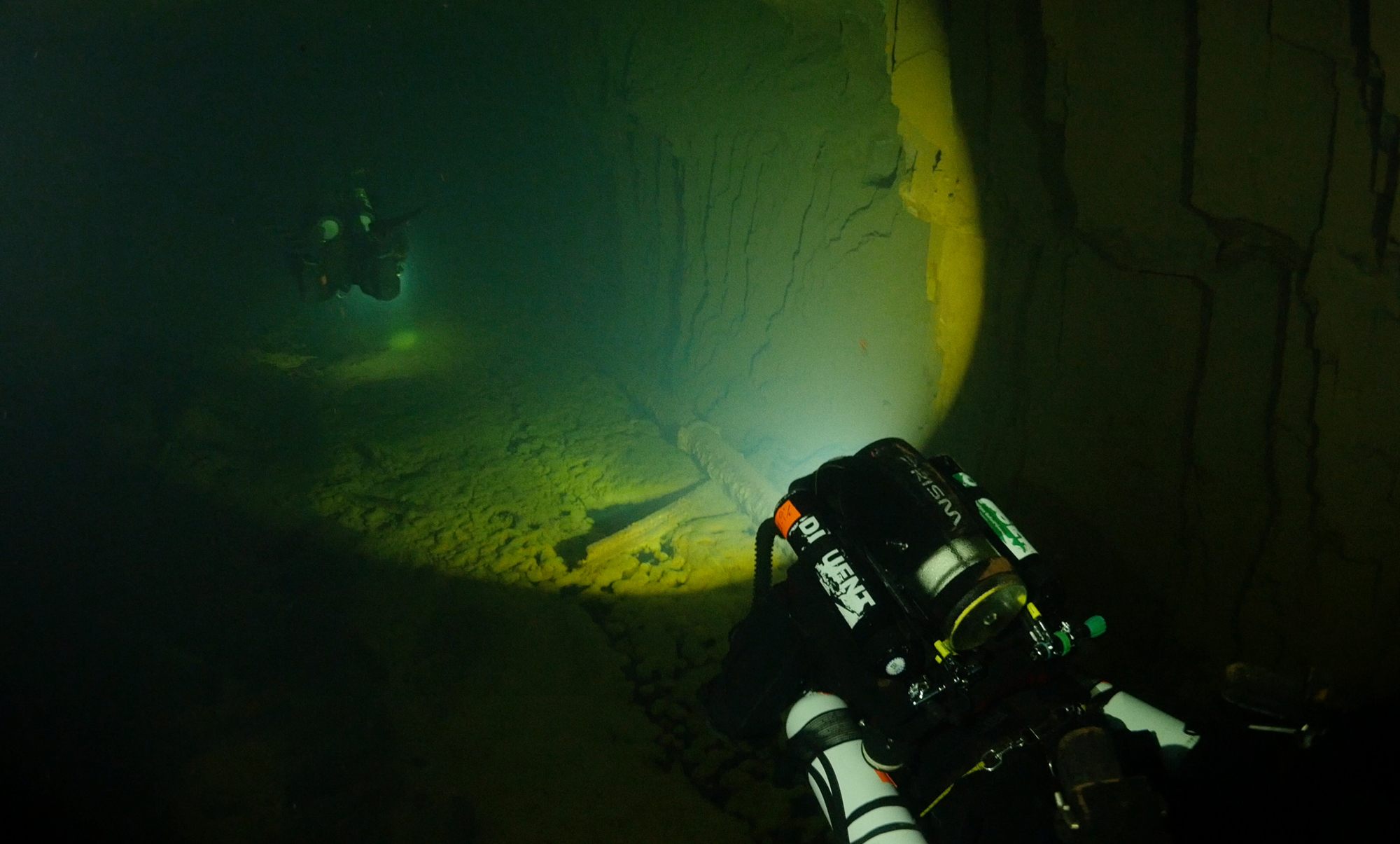
There are over 100 square kilometers of iron ore mines beneath Bell Island and under the sea floor of Conception Bay, where the WWII wrecks reside. Abandoned decades ago, these mine passages are now flooded. Recent exploration of these passages has revealed a trove of artifacts. Plans are now underway to open the mines to underwater cave explorers.
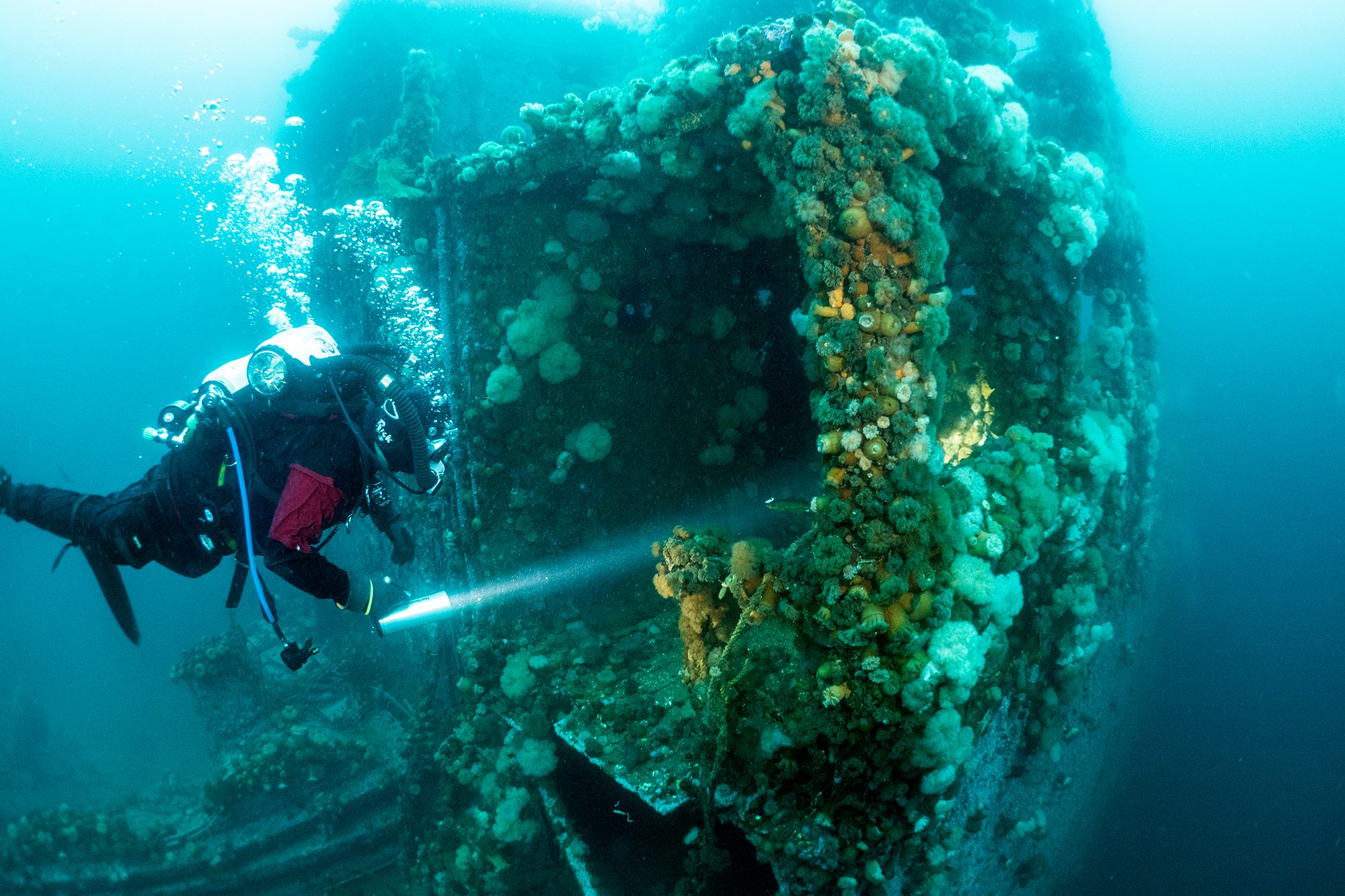
These rooms and companionways are filled with artifacts that are left undisturbed by visitors. Considered war graves, these sites receive reverence and respect from visiting divers who learn more about the War in the Atlantic at museums on Bell Island and in St. John’s.
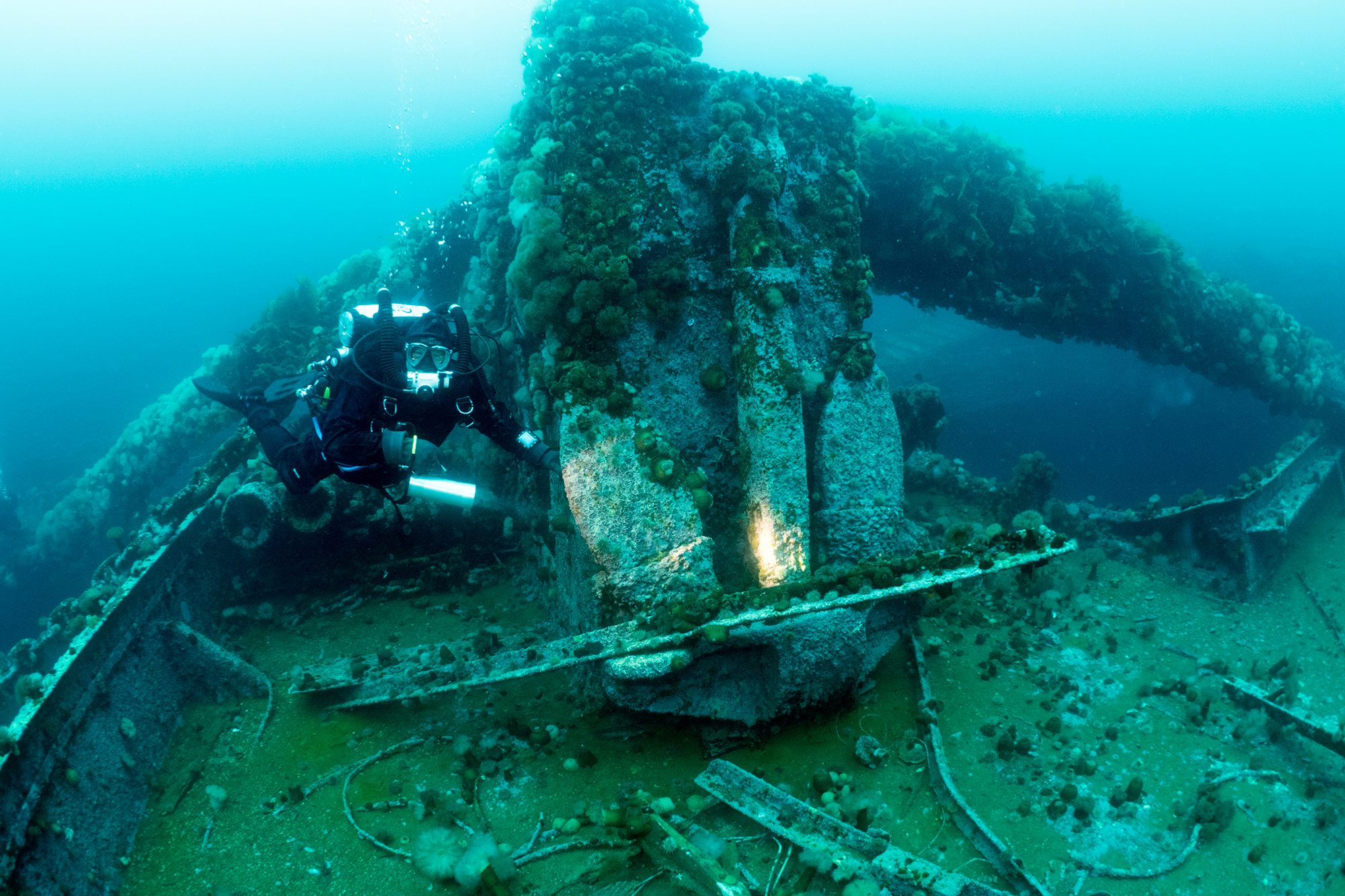
Rick Stanley, using a Hollis Explorer rebreather, examines an anchor locker. Four large anchors remain stowed upright in place on deck.

With the deck peeled away, diver Rick Stanley peers into the head. A bathtub and toilet in it are now becoming encrusted with anemones and sea urchins.

Icebergs become lodged on the sea floor in Conception Bay. As the ocean swells, they hop along the bottom like giant pile drivers, pulverizing the sea floor as they move. Divers need to employ special diving techniques and safety equipment to manage the challenging currents and dangers of calving ice.

Cas Dobbin shoots the companionway of the SS Saganaga. Bouquets of white anemones voraciously feed in the plankton-rich water.

The Mermaid dive vessel has a lift platform so that divers in heavy technical diving gear can be easily hoisted back to the deck. It is not unusual for some extreme divers to carry as much as 200 pounds of equipment for a technical dive.

With water temperatures hovering near freezing, divers generally choose to wear dry suits and heavy gloves that keep them warm in the frigid waters. A few hearty souls make shorter dives in traditional wetsuits.




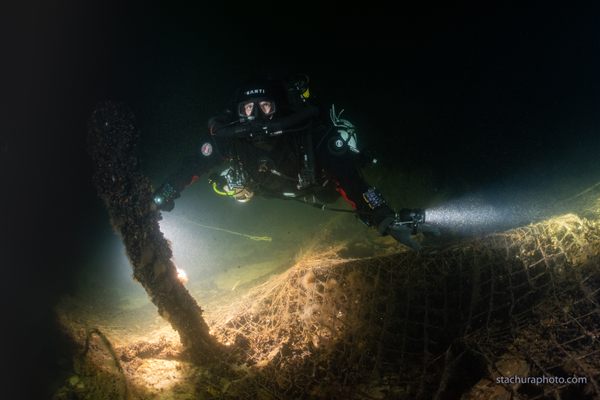









Follow us on Twitter to get the latest on the world's hidden wonders.
Like us on Facebook to get the latest on the world's hidden wonders.
Follow us on Twitter Like us on Facebook